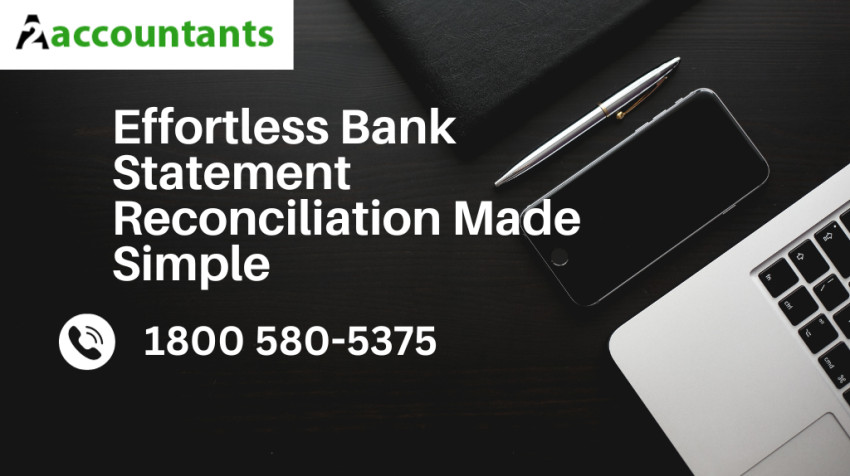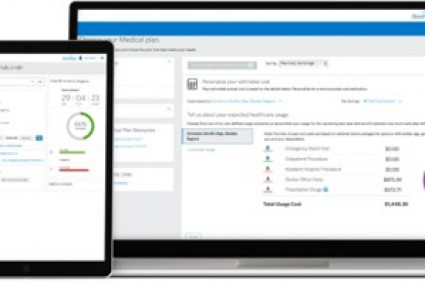
Accountants do account reconciliation at the end of each fiscal year. They were finishing up reconciliations to verify the general ledger account balance was accurate and complete. To support and balance the finances indicated in the ledger, the accessible ledger account balance is typically compared to third-party facts, techniques, and other reports.
In general, balancing accounting is an important step. Businesses must also bargain to avoid any subsequent or small misstatements. Aside from that, incomplete reconciliation poses a risk to the end of the fiscal year. In general, an automated reconciliation process reduces the chance of misstatement. Most firms use QuickBooks Desktop to reconcile bank statements.
Understanding Bank Statement Reconciliation
What is bank statement reconciliation?
Bank statement reconciliation is the process of comparing a company's internal financial records with the data presented on its bank statements. This meticulous comparison aims to identify any discrepancies between the two sets of data, such as missing transactions, errors, or unauthorized charges.
The Importance of Accurate Reconciliation
Ensuring the accuracy of your bank statement reconciliation is paramount for several reasons. First and foremost, it provides a clear and up-to-date snapshot of your financial position. This is essential for decision-making, budgeting, and financial planning. Moreover, accurate reconciliation helps detect any fraudulent activities or errors promptly, preventing potential financial losses and safeguarding the financial health of your business.
Causes for Preparing a Bank Reconciliation Statement
Accounting mistakes like skipping or double payments are uncommon. Bank reconciliation assists you in detecting such accounting mistakes early. Also, most corporations want to understand problems before they lead to embarrassing conditions.
You do not want your cheque or payment to be rejected by a crucial client. Also, your group does not wish to encounter calls from providers. Generally, a bank reconciliation will guarantee you know precisely which payment has been released.
Many businesses realize the advantage of investing in digital finance software and automating essential methods, like bank reconciliation. Also, this drives greater efficiency in the company and saves business resources. Besides, it lets finance teams spend more time on valuable tasks like calculating details to inform company strategy and main choices. How Do You Reconcile Bank Statements With QuickBooks Desktop?
Generally, most experts suggest reconciling your checking, credit card, and savings accounts each month. Generally, once you understand your bank statements, you can compare the list of financial transactions with what you entered into QuickBooks. If everything is equal, you understand your accounts are accurate.
Inspect Your Opening Balance
You have to back up your company file before starting with reconciliation. Also, you can read more about how to back up your company file to reconcile bank statements with QuickBooks Desktop.
Make a backup Company File
Backup company files save everything recent in your company file. Also, this adds to your accounting details, letters, logos, and files. However, it does not back up your payroll forms. Also, there are two methods to back up your points. Besides this, you can either back up your points or fix them manually.
Steps for Automatic Backup
- Press the File menu and choose Switch to Single-user Mode.
- Go to the File menu and Weaver Backup Company again. Choose Make Local Backup.
- Choose Local Backup in the Window and then click Next.
- Press Browse in the Local Backup only and choose where you want to secure your backup company file.
- Established the number of backups you want to keep.
- Choose Complete verification in the Online and Local Backup section. This operates a test to ensure your backup file is in a good state before you save.
- Press OK when you are prepared
- Choose Save it now, schedule future backups, and go to the Next.
- Tick the Save backup copy automatically when I close my company file checkbox. Press the number of times between backups.
- Choose New to make a schedule. Fill out the details to make a backup plan. You can establish a particular time or day of the week.
Effortless Strategies for Successful Bank Statement Reconciliation
Utilizing Advanced Accounting Software
Investing in robust accounting software is a game-changer for effortless bank statement reconciliation. Cloud-based accounting solutions, such as QuickBooks or Xero, automate much of the reconciliation process. These platforms sync seamlessly with your bank accounts, updating transactions in real-time and minimizing the risk of manual errors.
Establishing a Structured Reconciliation Schedule
Consistency is key when it comes to bank statement reconciliation. By establishing a structured reconciliation schedule, you create a routine that ensures timely and accurate financial reporting. Whether it's a weekly, biweekly, or monthly schedule, adherence to this routine fosters financial discipline and minimizes the chances of oversight.
Categorizing Transactions Effectively
Accurate categorization of transactions is fundamental to successful reconciliation. Implementing a systematic approach to categorizing income and expenses simplifies the reconciliation process. This involves creating a standardized chart of accounts tailored to your business's specific needs, ensuring uniformity and clarity in financial reporting.
Overcoming Common Reconciliation Challenges
Addressing Timing Differences
One of the common challenges in bank statement reconciliation is timing differences between when a transaction occurs and when it appears on the bank statement. Employing a proactive approach by reconciling accounts regularly can help identify and resolve these timing discrepancies promptly.
Resolving Discrepancies with Precision
Discrepancies are inevitable in financial records, but resolving them with precision is crucial. In such instances, a detailed investigation into the origin of discrepancies is necessary. This may involve cross-referencing invoices, receipts, and other supporting documents to pinpoint the root cause and ensure accurate reconciliation.
Conclusion
Effortless bank statement reconciliation is not just a lofty goal; it's an achievable reality with the right strategies and tools in place. By embracing advanced accounting software, establishing a structured reconciliation schedule, and overcoming common challenges with precision, businesses can streamline their financial operations and ensure the accuracy of their bank statements.
Remember, the key to successful reconciliation lies in a proactive and systematic approach. As you implement these strategies, you'll not only simplify the process but also enhance the overall financial health of your business.




